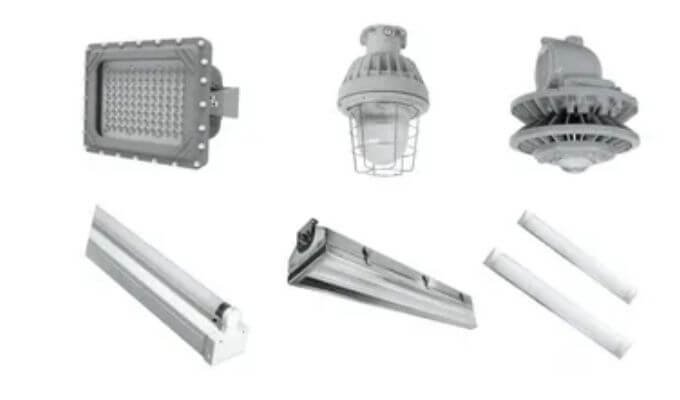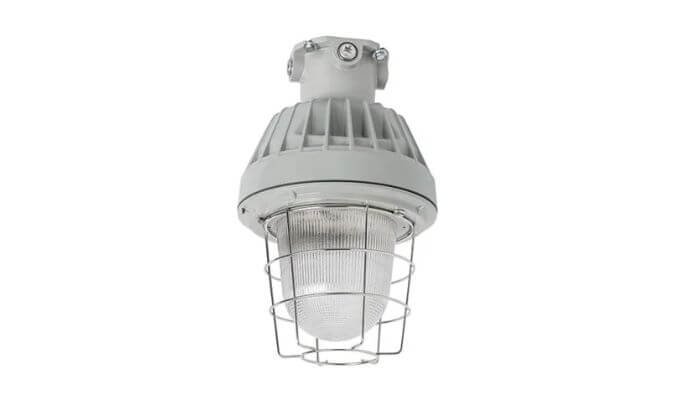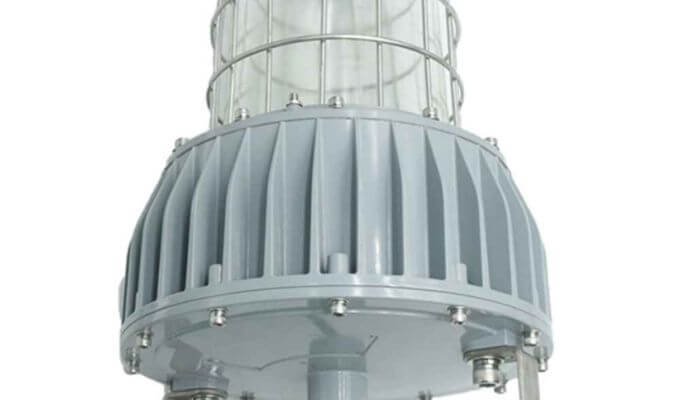Introduction
Wherever flammable gases, vapors, dust, or fibers are present in the industrial environment, the risk of explosion is a genuine concern. Industries use explosion-proof lighting systems capable of safely operating in explosive environments to combat such risks. However, choosing an explosion-proof light is more than heavy-duty construction—it is a matter of detailed understanding of hazardous area classifications. In India, where industries like oil & gas, chemicals, pharmaceuticals, and mining are expanding rapidly, the knowledge of dangerous area classifications is essential for ensuring workplace safety and regulatory compliance. This blog aims to comprehensively understand hazardous area classifications and how they relate to explosion-proof lighting solutions in the Indian industrial context.
What Are Hazardous Areas?
Hazardous areas are where the atmosphere contains—or may contain—flammable gases, vapor, dust, or fibers that may burn under specific operating conditions. These areas have the potential to explode, if necessary, precautions are not taken. The presence of such substances in varying concentrations determines the classification of these hazardous areas.
In India, standards for hazardous areas are led by international standards like the IEC (International Electrotechnical Commission) and regulated by authorities like PESO (Petroleum and Explosives Safety Organisation) under the Ministry of Commerce and Industry.
Why Explosion-Proof Lights?
Explosion-proof light fixtures are designed to contain any ignition source within the fixture and not permit flames or sparks to escape and ignite the flammable atmosphere surrounding them. They form a significant component of petroleum refineries, gas plants, fertilizer plants, chemical plants, paint booths, and underground mines.
Explosion-proof lighting must meet some standards and certifications to be deemed suitable for use in hazardous areas. IS/IEC 60079 series is widely followed in India for electrical equipment in explosive atmospheres.
Understanding Hazardous Area Classifications
Hazardous area classifications establish the level of risk within different parts of a facility. Generally speaking, the categorization system is separated into zones according to the frequency and length of an explosive atmosphere.
1. Gas and Vapor Environments (Zone System)
- Zone 0: A location where there is a persistent or prolonged explosive gas environment.
Example: Inside a fuel tank.
- Zone 1: An area that is likely to have an explosive gas environment during normal operations.
Example: Around fuel pumps in a petrol station.
- Zone 2: An area where an explosive gas environment is unlikely to form during normal operations and, if it occurs, will only endure briefly.
Example: Areas surrounding Zone 1.
2. Dust Environments (Zone System)
- Zone 20 is where combustible dust is present in the air all the time or for long periods.
- Zone 21 is where dust clouds are likely to occur during regular operation.
- Zone 22: This zone where dust clouds will only occur infrequently and for a brief period.
Temperature Classes and Gas Groups
To further specify hazardous classifications, two more parameters are considered:
Temperature Classes (T-Class)
The T-class defines the maximum surface temperature of the equipment. This is necessary because if the surface temperature of the equipment is greater than the ignition temperature of the surrounding flammable material, it will ignite.
Temperature Class |
Max Surface Temp (°C) |
T1 |
450 |
T2 |
300 |
T3 |
200 |
T4 |
135 |
T5 |
100 |
T6 |
85 |
Gas Groups
Different gases and vapors have different ignition characteristics. Gas groups are divided into:
- Group I: For mining atmospheres.
- Group II (A, B, C): For industrial atmospheres.
IIA: Propane
IIB: Ethylene
IIC: Hydrogen or Acetylene (most dangerous)
Explosion-Proof Light Selection by Classification
When selecting explosion-proof lighting, matching the product certification to the area classification is crucial.
- For Zone 0, highly specialized lighting with intrinsic safety (Ex ia) is required.
- For Zone 1, explosion-proof (flameproof) lighting with Ex d or Ex e protection is suitable.
- For Zone 2, explosion-protected lighting, such as Ex n or restricted-breathing enclosures, can be less complex.
Each fixture must also comply with the temperature class and gas group applicable to the zone. Indian industries must ensure that the explosion-proof lighting they are procuring is certified by the concerned administrative bodies such as ATEX, IECEx, or PESO.
Regulatory Framework in India
Classification of hazardous areas and equipment approval in India fall under the purview of PESO. Industries must adhere to the guidelines of:
- IS/IEC 60079 series (Electrical apparatus for explosive gas atmospheres)
- The Explosives Act of 1884
- The Petroleum Act of 1934
- Factories Act, 1948
Indian manufacturers and importers of explosion-proof lighting must get their products tested and certified by BIS or BIS-approved testing labs like CMRI (Central Mining Research Institute) or ERTL (Electronics Regional Test Laboratory).
Best Practices for Indian Industries
- Risk Assessment: Conduct a proper area classification study before selecting lighting.
- Certified Products: Always use PESO, ATEX, or IECEx-certified lighting.
- Maintenance: Explosion-proof lighting needs to be inspected and maintained regularly.
- Training: Train employees to understand area classifications and use equipment accordingly.
Conclusion
Hazardous area classification is not just a technical requirement but a critical step in ensuring the safety of industrial operations that handle flammable materials. For Indian industries, proper classification and usage of correct explosion-proof lighting can significantly reduce the risks of accidents and compliance with national safety standards. With increasing awareness and enforcement of regulations in India, industries must prioritize safety by choosing certified and quality explosion-proof lights that are specific to the needs of their hazardous locations. This safety investment saves lives and guarantees long-term operational continuity and adherence to the law.




